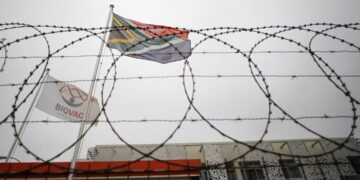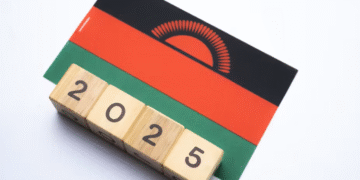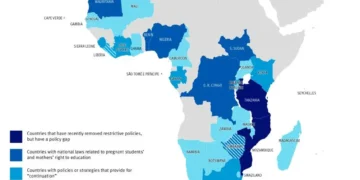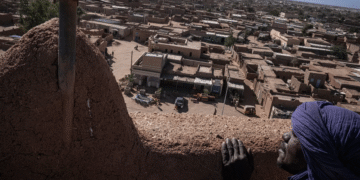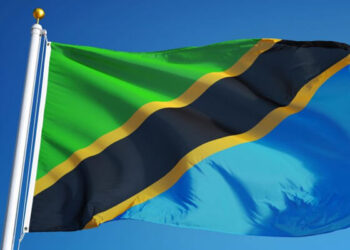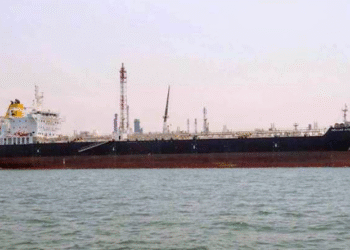“Africa’s debt crisis” has been generating a lot of discussion recently. It generally refers to the challenges many African countries face due to high levels of debt, which can impact their economic stability and development. Factors contributing to this crisis include external borrowing, economic vulnerabilities, and global economic fluctuations.
Several countries in Africa have experienced difficulties in servicing their debt, leading to concerns about sustainability and potential impacts on social services and economic development. International organizations and policymakers often engage in efforts to address these challenges through debt relief initiatives and financial assistance programs.
Africa’s debt situation is complex and diverse. Many African countries carry significant levels of debt, which can be attributed to factors like external borrowing, economic challenges, and the impact of global economic conditions. Some countries face difficulties in servicing their debt, leading to concerns about sustainability.
Root Causes
Ethiopia’s debt situation can be attributed to various factors, including:
Infrastructure investment hopes: large-scale projects, such as the Grand Ethiopian Renaissance Dam, have led to significant borrowing to fund infrastructure development. External shocks such as natural disasters, political instability, and global economic downturns can disrupt economic stability, impacting Ethiopia’s ability to manage its debt. Trade imbalances and trade deficits, where imports exceed exports, can contribute to foreign exchange shortages and the need for external borrowing.
Fiscal Policy Choices from government spending decisions, subsidies, and taxation policies can affect the budget and contribute to debt accumulation. Dependency on agriculture also adds to what makes the economy vulnerable to climate change and fluctuations in commodity prices, influencing its debt dynamics.
Another cause can be attributed to currency depreciation. Exchange rate fluctuations may impact the cost of servicing foreign currency-denominated debt, especially if the local currency depreciates. This can have a great impact on debt management practices. The effectiveness of debt management strategies and the terms of loans acquired can influence the sustainability of Ethiopia’s debt.
Handling these root causes requires a comprehensive approach involving prudent fiscal policies, diversified economic strategies, and effective debt management practices.
Ethiopia became Africa’s third default in as many years on December 26, 2023, after it failed to make a $33 million “coupon” payment on its only international government bond.
“Africa’s second-most populous country announced earlier this month that it intended to formally go into default, having been under severe financial strain in the wake of the COVID-19 pandemic and a two-year civil war that ended in November 2022.”
The East African country, Ethiopia, first requested debt relief under the G20-led initiative in early 2021.
Progress was initially delayed by the civil war, but, with its foreign exchange reserves depleted and inflation soaring, Ethiopia’s official sector government creditors, including China, agreed to a debt service suspension deal in November.
On Dec. 8, the government said parallel negotiations it had been having with pension funds and other private sector creditors that hold its bond had broken down. Reuters reports.
Public debt in Ethiopia averaged 51.6% of GDP in the decade to 2021, above the Sub-Saharan Africa region average of 42.2%. In 2021, Ethiopia’s public debt was 46.4% of GDP. Per FocusEconomics
FocusEconomics states in its data that in 2018, 2019, 2020, and 2021, Ethiopia’s public percentage in GDP was 55.8, 53.9, 53.8, and 46.4, respectively.
Africa’s debt landscape remains diverse and dynamic. Various factors contribute to the continent’s debt challenges, including external borrowing, economic vulnerabilities, and global economic conditions. While some African countries have successfully managed their debt, others face difficulties, raising concerns about sustainability and the need for careful financial management.
It’s important to note that each African country has its own unique economic circumstances, and there isn’t a one-size-fits-all explanation for the continent’s debt situation. If you have more specific questions about a particular country or aspect of Africa’s debt, please provide additional details.
Africa’s debt situation varies among its countries. Many face challenges due to external borrowing, economic issues, and the impact of global events. If you have specific questions about a particular country or aspect of Africa’s debt, feel free to ask.
Contributing Factors
Africa’s debt crisis can be attributed to a combination of factors:
- High Dependency on External Borrowing: Many African countries heavily rely on external loans to fund development projects, infrastructure, and budget deficits. The accumulation of debt from international creditors, including bilateral and multilateral institutions, increases the risk of debt distress.
- Economic Shocks: African economies are often vulnerable to external economic shocks, such as fluctuations in commodity prices (important for many African economies), global economic downturns, and natural disasters. These shocks can impact revenue generation and make it challenging for countries to service their debts.
- Weak Fiscal Management: In some cases, poor fiscal management and governance issues have led to mismanagement of funds, corruption, and inefficient use of borrowed resources. This exacerbates the debt burden and reduces the impact of borrowed funds on development.
- Currency Depreciation: Exchange rate fluctuations, including the depreciation of local currencies, can increase the cost of servicing foreign currency-denominated debt, making it more challenging for countries to meet their debt obligations.
- Terms of Loans: Some African countries have taken loans with unfavorable terms, including high interest rates and short repayment periods. These terms can significantly strain the ability of countries to service their debts, especially when economic conditions worsen.
- Lack of Diversification: Reliance on a narrow range of exports and revenue sources can make economies more susceptible to external shocks. Diversification challenges can limit a country’s ability to generate sufficient income and reduce dependency on borrowing.
- Global Economic Conditions: External factors, such as changes in global interest rates, can impact the cost of borrowing for African countries. When global interest rates rise, the cost of servicing debt also increases.
- Geopolitical Factors: Political instability, conflicts, and geopolitical tensions can contribute to economic uncertainties, making it difficult for countries to attract investment and manage their debt effectively.
Strategies for Effective Debt Restructuring
Tackling Africa’s debt crisis requires a combination of prudent fiscal policies, transparent governance, sustainable development strategies, and international cooperation to ensure that debt is managed responsibly and does not become an impediment to economic growth. Addressing them also requires a comprehensive and multi-faceted approach, involving both domestic and international efforts. Here are some key strategies:
- Enhanced Fiscal Responsibility and Governance: Strengthening fiscal management and governance to ensure transparent and accountable use of public funds and also implementing effective anti-corruption measures to prevent mismanagement and diversion of resources by unauthorized personnel.
- Debt Sustainability Analysis: Conducting thorough debt sustainability analyses to assess a country’s ability to service its debt without jeopardizing economic stability.
- Diversification of Economies: Promoting economic diversification to reduce reliance on a few sectors makes countries less vulnerable to external shocks.
- Responsible Borrowing Practices: Adopting responsible borrowing practices, including careful consideration of loan terms, interest rates, and the impact on debt sustainability,.
- Debt Restructuring and Negotiation: Engaging in transparent and constructive negotiations with creditors to restructure debt when necessary, ensuring terms are sustainable and manageable.
- Development of Local Capital Markets: encouraging the development of local capital markets to reduce dependence on foreign currency-denominated debt and promote domestic financing options.
- Investment in Productive Sectors: Directing borrowed funds toward productive sectors that contribute to economic growth and have the potential to generate revenue.
- Capacity Building and Technical Assistance: Providing capacity-building support and technical assistance to enhance countries’ ability to manage debt effectively and implement sound economic policies.
- International Collaboration: Collaborating with international financial institutions, regional bodies, and creditor nations to coordinate efforts and provide support for debt relief where appropriate.
- Promotion of Inclusive Growth: Implementing policies that promote inclusive economic growth, poverty reduction, and job creation to improve the overall economic health of nations.
- Social Impact Assessment: Conducting social impact assessments to ensure that debt-financed projects benefit the broader population and contribute to sustainable development.
- Continued Access to Financial Markets: Maintaining countries’ access to international financial markets, but with a focus on responsible and sustainable borrowing practices.
By combining these strategies, African nations can work towards resolving their debt challenges while fostering economic development and stability without going through the hassle of defaulting and the negative consequences that they may experience due to their failure to meet financial obligations. International cooperation and support, including debt relief initiatives, can also play a crucial role in addressing the continent’s debt crisis.
In conclusion, tackling the complexities of the debt crisis demands visionary solutions. Through meticulous fiscal management, strategic debt restructuring, and a united global effort, we can begin to mitigate the impact of this crisis. As we chart a course forward, it is crucial for policymakers, financial institutions, and individuals to collectively embrace these solutions. The road to recovery is challenging, but with concerted efforts and a commitment to change, Africans can forge a path towards economic revitalization and a more secure financial landscape. The solutions outlined above present a roadmap for navigating the intricate web of the debt crisis. Governments, financial institutions, and citizens must unite in their commitment to enact and support these measures, ensuring a more resilient and stable global financial landscape for generations to come.


